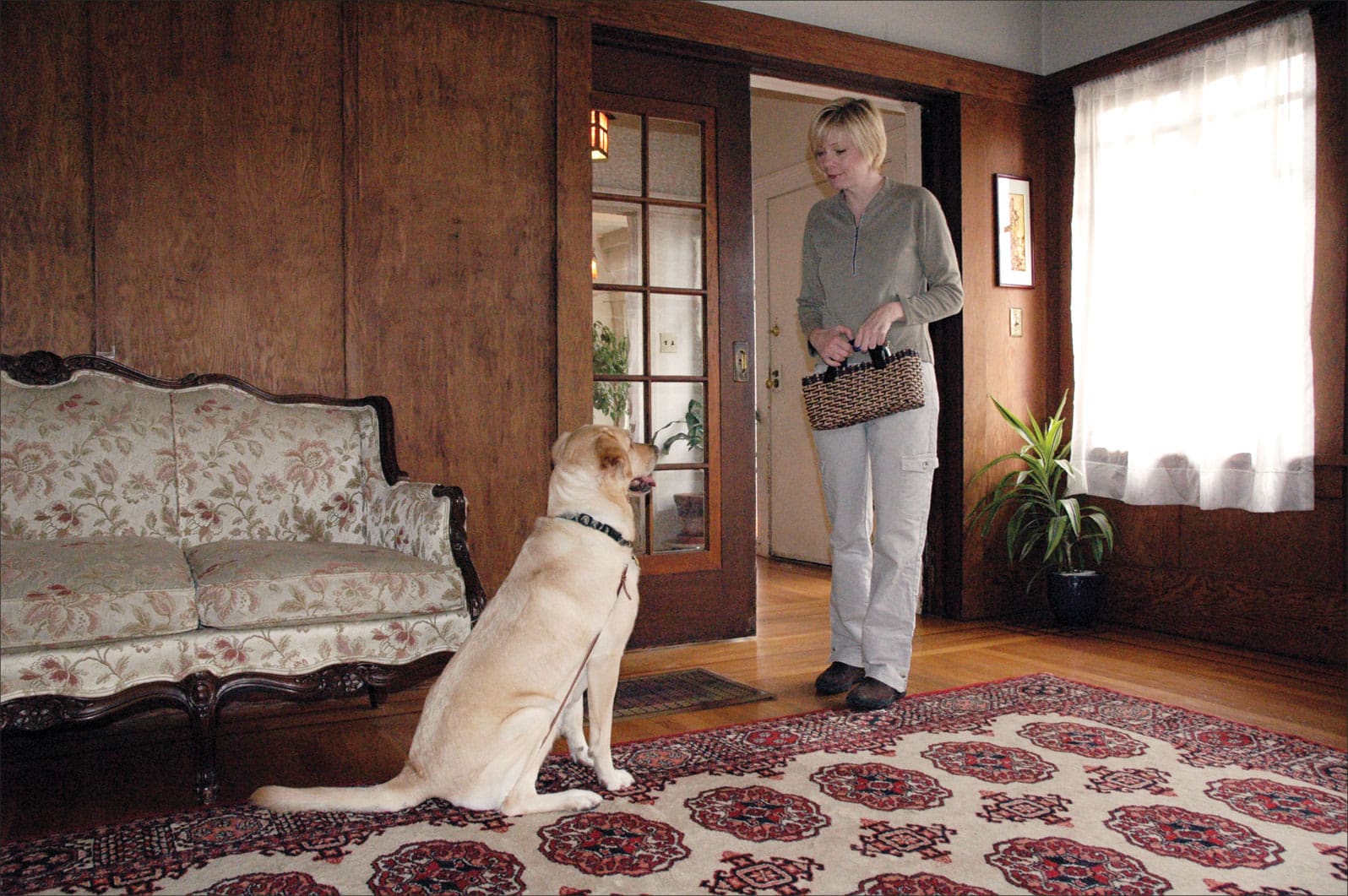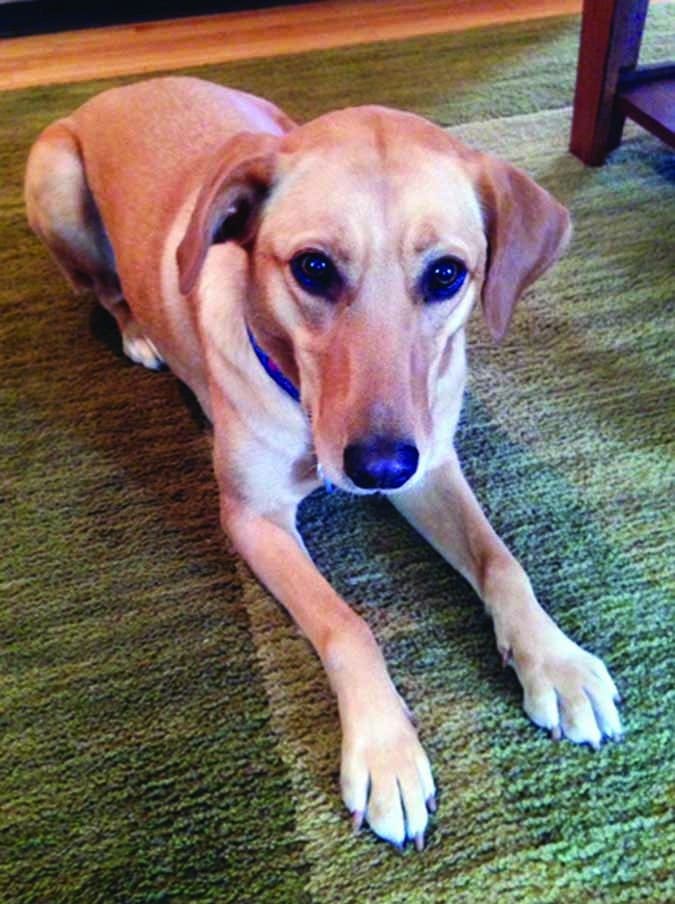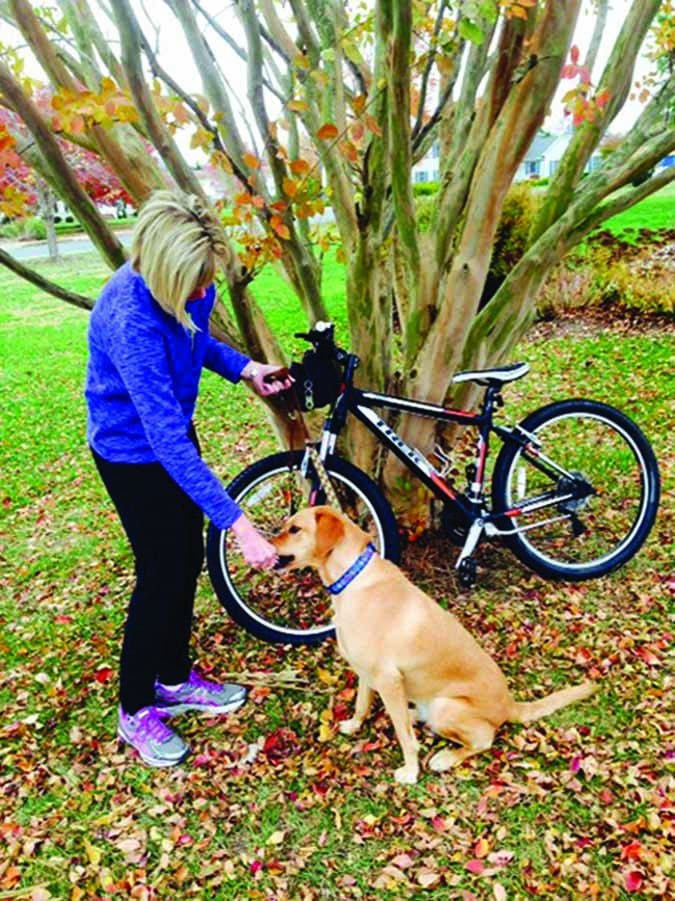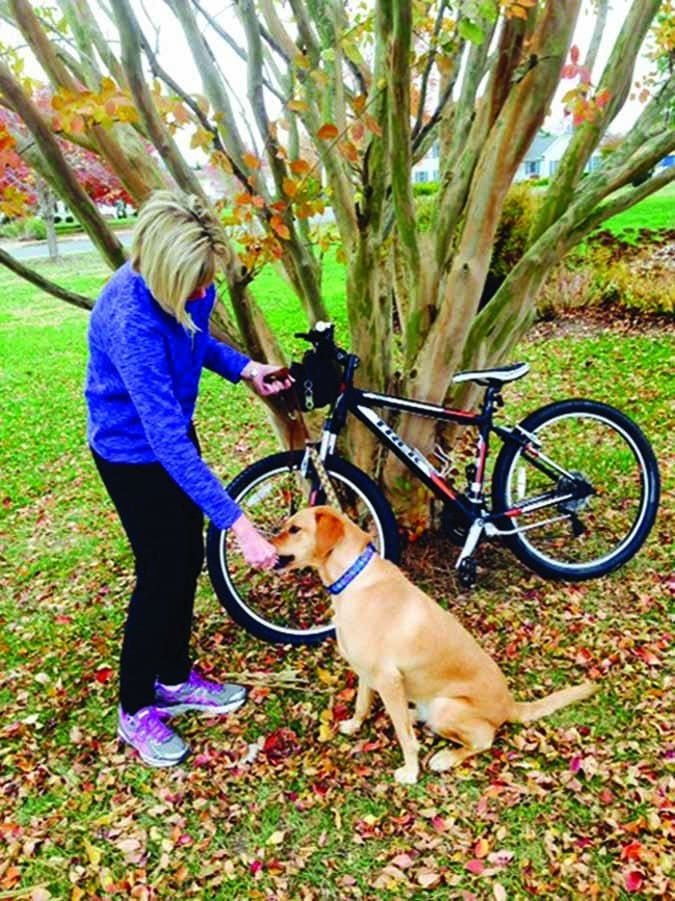[Updated November 16, 2017]
As an apprentice to a professional trainer in 2007, I learned to teach group good manners classes for puppies and adult dogs. Eventually I graduated to teaching group classes as a head trainer at my mentor’s facility, and started my own training business in Baltimore (Pawsitive Fit Puppy & Dog Training), offering private instruction in clients’ homes. As much as I liked the energy and excitement in group classes, and while group training classes work well for many dogs and owners, I found teaching “privates” was a better fit for me and many of my clients. Some of my private clients who previously attended group classes with other trainers realized that they (or their dogs) were not well suited for learning in a group environment. Several found classes so stressful that they dropped out before completing the course!

In-home training can be expensive, often costing several hundred dollars more than an average group training class. Some people can easily afford it, but the “sticker shock” of an initial quote for a package of private lessons may scare others away, limiting the options of many owners and dogs who could benefit from using this service. Fortunately, private trainers are often flexible in how they structure payment to make their services more financially accessible. They may discount the price of a course or package of several classes, and some offer pay-as-you-go options. While paying by the class may cost you a few dollars more than an up-front purchase of a course, it allows you to schedule sessions as your budget allows.
Also, with instruction tailored to your needs, you may need fewer sessions than the six to eight weeks required of most group classes, reducing your costs. Even if it requires some creative budgeting, in-home instruction can be a wise investment in your relationship with your dog if it is the best option for training.
Let’s look at the benefits of in-home training, for humans and dogs.
Advantages of In-Home Training for Dog Owners
I’ve learned that there are times when in-home training is simply the best alternative for dog owners. The following are just a few of those times:
When time is at a premium – It is difficult, if not impossible, for some people to commit to a seven- or eight-week training class on the same day each week. Evening work hours or weekend commitments to other family activities may coincide with the only times that group classes are offered. Many private trainers offer flexibility in appointment times from week to week, to accommodate you if you are available Tuesday morning this week, but only Wednesday evening next week.
Some families are so tightly scheduled, that simply finding time to travel to and from a training center for classes is problematic. A trainer who can come to their home, or even schedule sessions from the park where the kids’ soccer practice is being held concurrently, can make sure that the dog’s lessons don’t get lost in the shuffle.
Are you short on time for training, or looking for quicker results? “Day training,” a service offered by some in-home trainers, may be your answer. With day training, the trainer comes to your home while you are at work or otherwise occupied. The trainer works with your dog to build the foundations of the behaviors you select, usually for two to three sessions each week for several weeks. While they “install” the new behaviors, most private trainers require an additional weekly session with the owner present to teach the required skills to maintain the training.
Day training services are significantly more expensive than standard in-home classes where the owner takes an active role in all training sessions. If you hire someone else to do most of the “heavy lifting” when it comes to training your dog, prepare to pay!
Health issues – An owner may have health problems or restricted mobility, making it difficult, or even impossible, to work with her dog in a group class. Mental health issues can also make in-home training the best, or only, choice. Private trainers can work with owners who are disabled, ill, or elderly and lack the mobility or stamina needed for a group class. They are also in a better position to suggest modifications to the home environment to make it easier for an owner to navigate with their dog and manage their dog’s behavior.

Different learning styles – If you learn more easily through observation, you may respond best to watching a trainer demonstrate the skills used to teach your dog new behaviors. Perhaps you need more emphasis on detailed oral or written instructions, or prefer diving right in with some coaching from the trainer. In the client’s home, a trainer is able to adapt their teaching method, lesson plans, and expectations of progress according to your preferred style to maximize your learning potential.
The personal touch – In a private training session, the trainer focuses on only you and your dog. You have that trainer’s undivided attention to help you hone your training skills, answer any questions, and address any challenges you may have experienced while working with your dog.
Training tailored to your needs – Your dog may already know how to wait politely for the food bowl and drop items on cue, but is a disaster walking on leash and greets guests to the home with a chest bump. With personalized instruction, a trainer can create a custom curriculum that focuses on the behaviors that you consider most important.
It’s possible that your home environment poses challenges to your dog’s success that are best addressed on-site. For example, a dog might be able to learn and demonstrate perfect recalls and sit-stays in a training center or neutral setting, but be far too distracted by the barking dogs or children jumping on a trampoline next door to perform these behaviors at home. When a trainer can observe the unique training challenges present in your home, she can offer techniques for conquering them in a much more efficient way, reducing your frustration with your dog’s lack of compliance.
Force-free training classes not offered in your area – You may live in an area where the only group classes offered are old-fashioned obedience classes that use collar “corrections” or other techniques based on force and punishment. If so, look for a force-free trainer in the vicinity offering private instruction. (See “Resources,” page 13, for sources for lists of force-free trainers).
If you can’t afford the cost of a class package with a private trainer, pay for one or two sessions to start. After some initial instruction, you can train on your own, using a good basic, force-free training book for guidance (see page 13 for my recommendations). When your budget allows, you can always have the trainer back for a single session to fine-tune skills if you need to. When you have a simple training challenge, most trainers are happy to help former clients by phone or by e-mail for free or a reduced charge.
Advantages of In-Home Training for Your Dog
Sometimes it’s the dog who would benefit the most from private lessons! For example:
Dogs who are unsuited for a group class – Is your dog anxious or fearful? Easily aroused? Reactive to other dogs or strangers? Attending a group manners training class may do more harm than good. While you want to help your dog overcome his fears, exposing him to what he fears in close proximity or at a high intensity can make him even more fearful.
A dog-reactive dog in a class of dog-friendly dogs is disruptive, and possibly dangerous, to the other dogs, their owners, and the trainer. There are some wonderful group classes specifically designed for dog-reactive dogs – individuals with aggressive on-leash reactions toward other dogs. These classes are a great option if offered in your area. If not, a private trainer experienced in working with leash-aggressive dogs can help you work with your dog in real life environments. Aggressive behavior toward humans needs to be addressed in private sessions with a qualified behavior professional before considering a group class.
Dogs who are anxious or high-energy and easily aroused may feel overwhelmed in an environment as stimulating as a group class. This leads to difficulty in maintaining focus and attention; when there is no attention, there can be no training. “Cautious canines” and “hyper hounds” may be more relaxed starting training in a familiar home environment.
If you have a dog who is not suited for group classes, but still needs manners training, look for a private trainer experienced in working with difficult dogs. With your trainer’s help, you can teach your dog manners as well as addressing any behavior issue that requires special behavior modification training. Working on basic behaviors that teach your dog attention and focus (name recognition, putting attention on cue) and impulse control (stay, wait at the door, wait for food), better prepares your dog to cooperate with behavior modification training.
Dogs who are deaf, blind, or have other special needs will also do best with private, in-home training. Look for a trainer experienced in working with dogs that have your dog’s particular special need; specific skills are required that the average trainer may not possess.
Distractible dogs – When teaching new behaviors, the fewer distractions, the easier it is for your dog to learn. You can never eliminate all distractions, even at your home – an unexpected UPS delivery, the neighbor mowing the lawn, kids playing loudly next door, and construction noise are beyond your control.
But in the privacy of your home, you are able to control the number and intensity of many distractions while training. Turn your cell phone off, unplug the landline, send the kids upstairs to do homework, pick the toys up off the floor, and close the blinds.
If possible, schedule your appointments at more quiet times of the day, when there are no other dogs, strange humans, or unfamiliar sights and smells to compete for your dog’s attention. If you are the most interesting thing in the room when you train, it’s easier for your dog to stay focused. When ready for more advanced training, you can easily control your dog’s exposure to distractions in and around your home.
Training in the environment where most behavior happens – While some owners take their dogs everywhere with them, many dogs spend their days in and around their homes – in the house, yard, on a neighborhood walk, at a nearby park, with only occasional visits to a vet or pet supply store.

It makes sense to train in the environment where most dogs spend most of their time – and where it is most important for a dog to be well behaved. You can teach your dog in the areas of your home where problem behaviors may occur (at the doors, around counters or furniture, interacting with your kids, etc.). And your trainer can help you with modifications to your particular home environment to better manage your dog’s behavior and make training easier.
Access to the real world – Private training does not have to take place in your home. When you and your dog are ready to increase distractions, you can work with your trainer practicing behaviors outdoors. You can even meet at a park or outdoor shopping mall to work on loose leash walking, polite greetings, or attention skills.
Sometimes a Group Training Class is Better . . .
Professional in-home training is not all things to all dogs or all owners. In addition to being less expensive than private training, group classes offer some benefits to both dogs and their humans that personal instruction does not. For example, puppies who are well socialized at an early age are less likely to develop fear-based behavior issues as adult dogs. A well-run group puppy class typically offers lots of exposure to other puppies as well as interactions with unfamiliar humans in a novel environment. Many classes also provide after-class puppy playtime, pairing pups of similar size, personalities, and play styles for some games and friendly tussling.
While group class alone is not sufficient socialization for your pup, it is a good weekly opportunity for safe, supervised socialization. If you choose to work with a trainer in your home, make it a priority to find appropriate socialization opportunities with people and other friendly dogs.
There is a camaraderie among dog owners that often develops in a group training class. You meet other people, swap stories about your dogs, share your successes, and commiserate over behavior challenges. Realizing that other people make training mistakes, get frustrated, and have dogs that are as imperfect as yours, may make you feel less alone in your efforts. Sometimes friendships develop that go beyond the walls of the training center. You may find the perfect playmate for your dog and arrange play dates!
All that said, as a trainer, I really enjoy having the opportunity to get to know my clients and their dogs more intimately in private lessons. I have achieved a good deal more success teaching owners and dogs one-on-one than in my short career as a group trainer.
Since moving to the eastern shore of Maryland a few years ago, my business mainly consists of consultations with owners whose dogs have more serious behavior issues, though some need only basic manners training. But when, every once in a while, someone calls and says, “I have a 8-week-old puppy and we need training!” I’m thrilled. It means a close encounter with a little life that I can help mold, and spend time teaching someone how to create an extraordinary life with their new family member.
Bailey, a 3-year-old Lab-mix, needed manners training, but due to some more serious behavior problems, she was not a good candidate for a group class.

As a puppy, Bailey was transferred from a shelter in Georgia to one on the eastern shore of Maryland. It was a year before she was adopted by a loving family; a married couple with two boys, ages 9 and 12. In the next 14 months Bailey had surgeries on both knees for luxating patellas. Her recovery and rehabilitation required months of kennel confinement and restricted leash walking only. Bailey was trained at home, but training was limited and not very effective.
In time, Bailey made a full recovery from her surgeries and is now a healthy, active dog with normal mobility. When her owners called me, Bailey not only needed basic manners training, but had developed several serious behavior issues that needed to be addressed as well. The common behavior problems were jumping on family, attention-seeking barking, and “not listening” or coming when called. Of more concern was her reactive behavior toward other dogs, some strangers, and bicycles passing. Her leash aggression toward other dogs made it impossible to bring her to a group training class for basic manners training. And walks with Bailey had become a nightmare, trying to avoid other dogs and bicyclists.
After our initial behavior consultation, Bailey’s family now manages her environment more carefully, has increased her physical and mental exercise, and is committed to using only positive methods of training. Our two follow-up appointments have focused on a combination of manners training, working on attention and impulse control, reinforcing calm behavior, managing behavior, and behavior modification training (counter-conditioning and desensitization), beginning with her intense reactive response toward bicyclists.
Her owners are happy to report that since they started working with Bailey, she is calmer, barking for attention has decreased, and she “seems happier.” At our appointment just yesterday, she still greeted me at the door by jumping initially, but there was no physical contact or barking, and after two or three leaps she sat down. Our training with moving bicycles has also paid off; Bailey’s mom reports that she can now walk Bailey and feed yummy treats as bicyclists pass, and Bailey barely notices them go by.
Bailey still has a way to go. We will continue good manners and behavior modification training in her home and neighborhood. With a family committed to her training and well being, and based on the progress we’ve already seen, Bailey and her family are well on their way to a better life together.






I liked that you mentioned sometimes is difficult to commit to training classes for your dog. My husband and I adopted a dog last month, and we are thinking about how to schedule training lessons for him. I will contact a professional to schedule a training class.